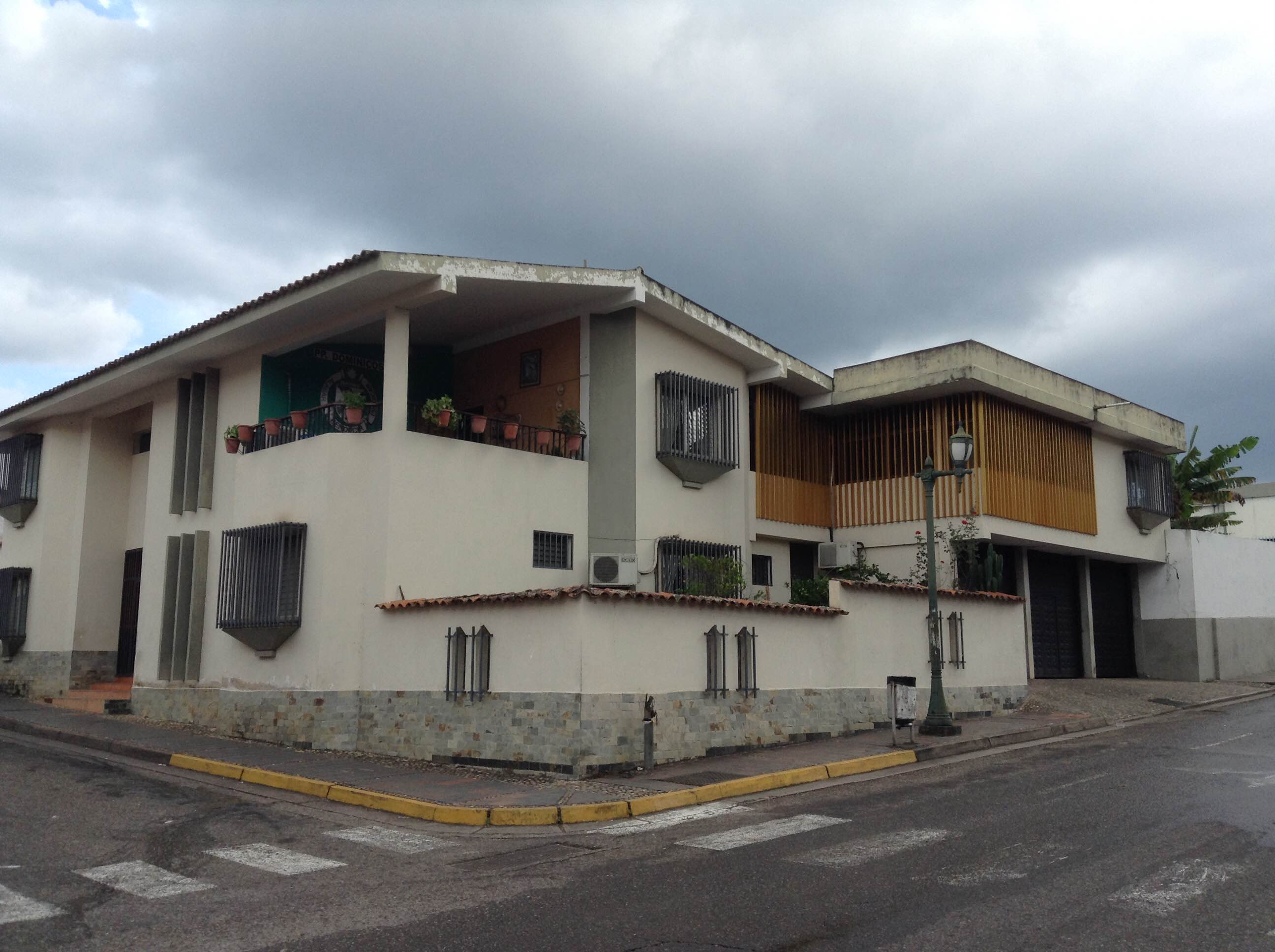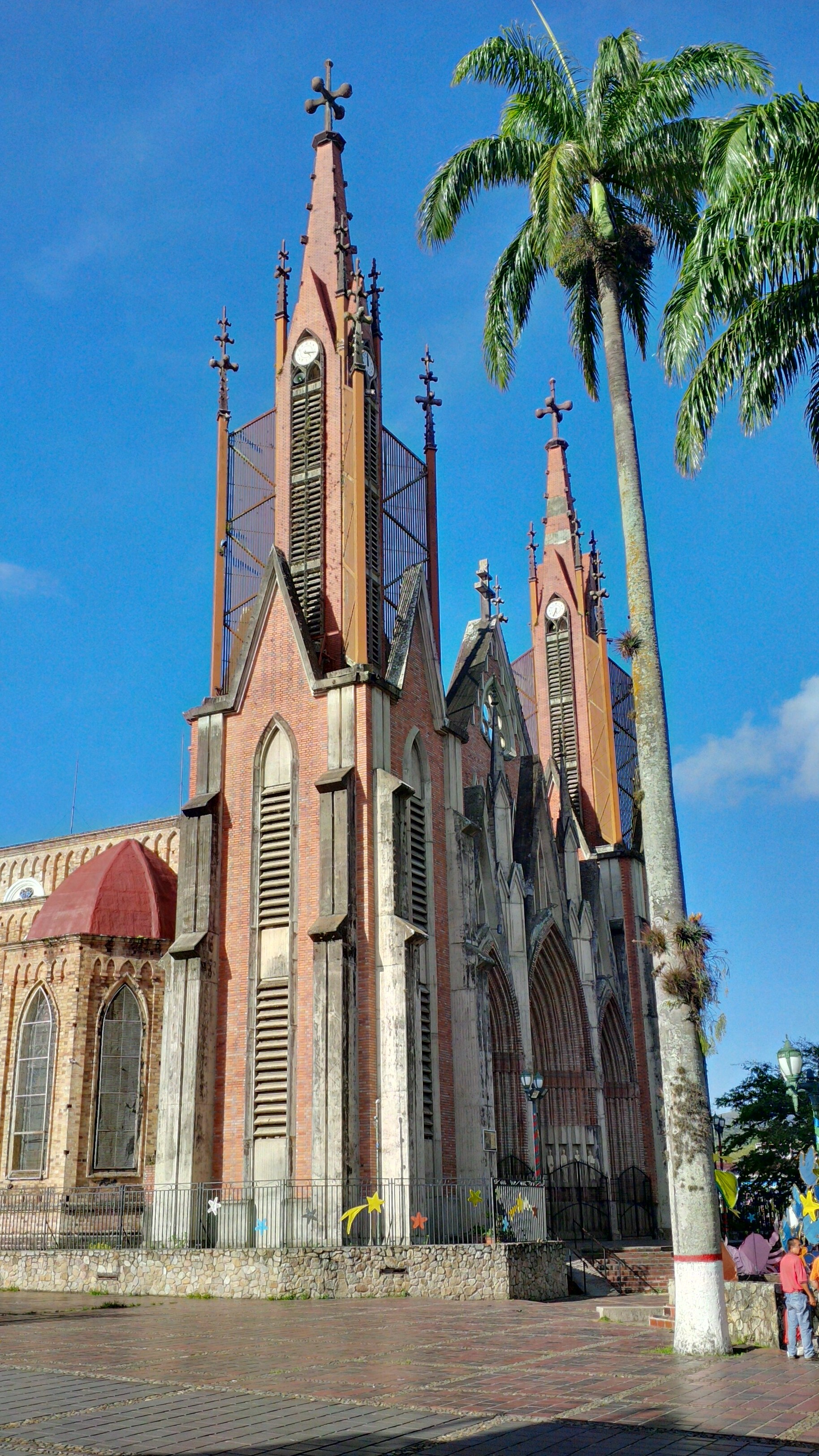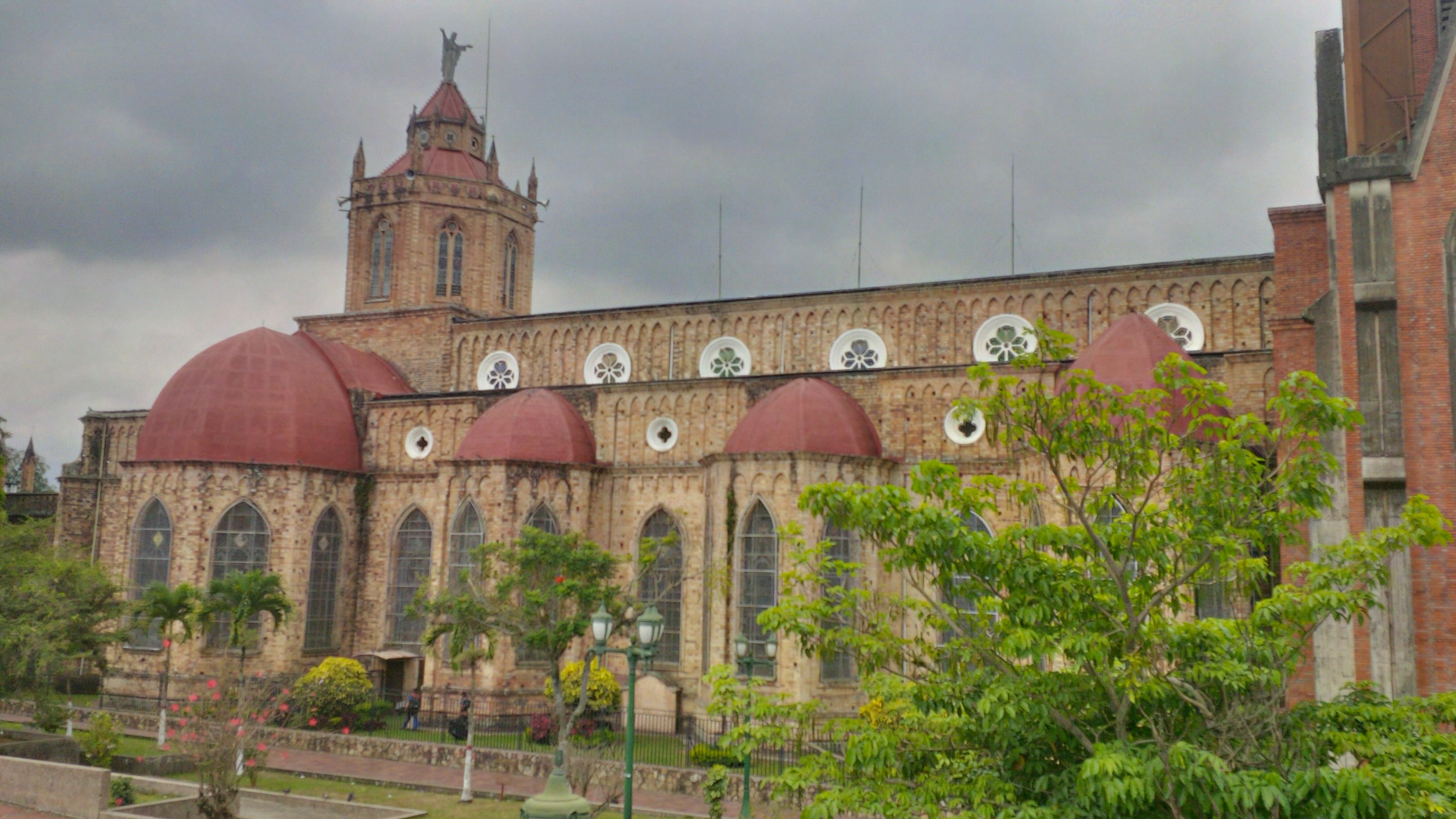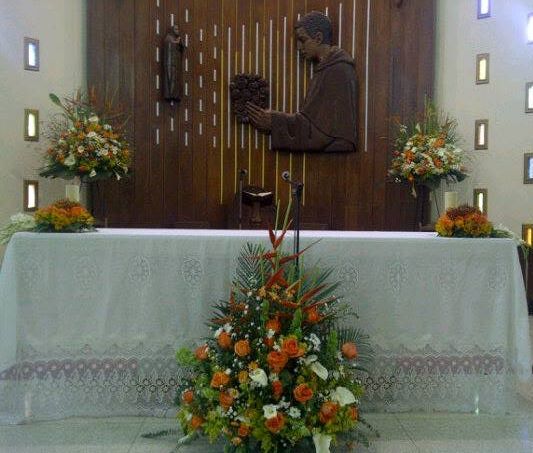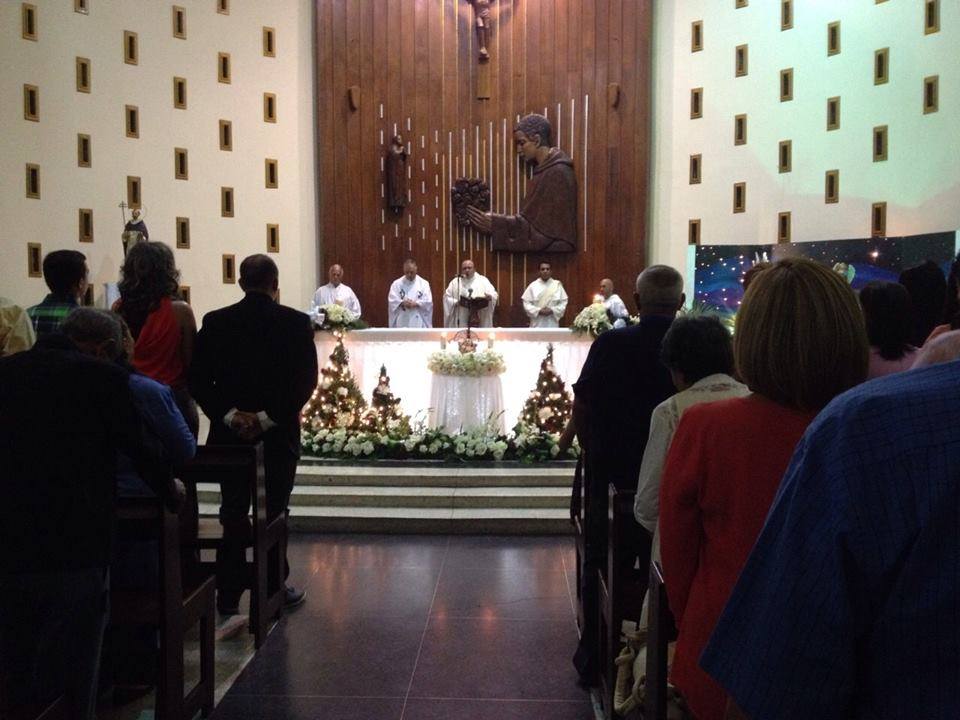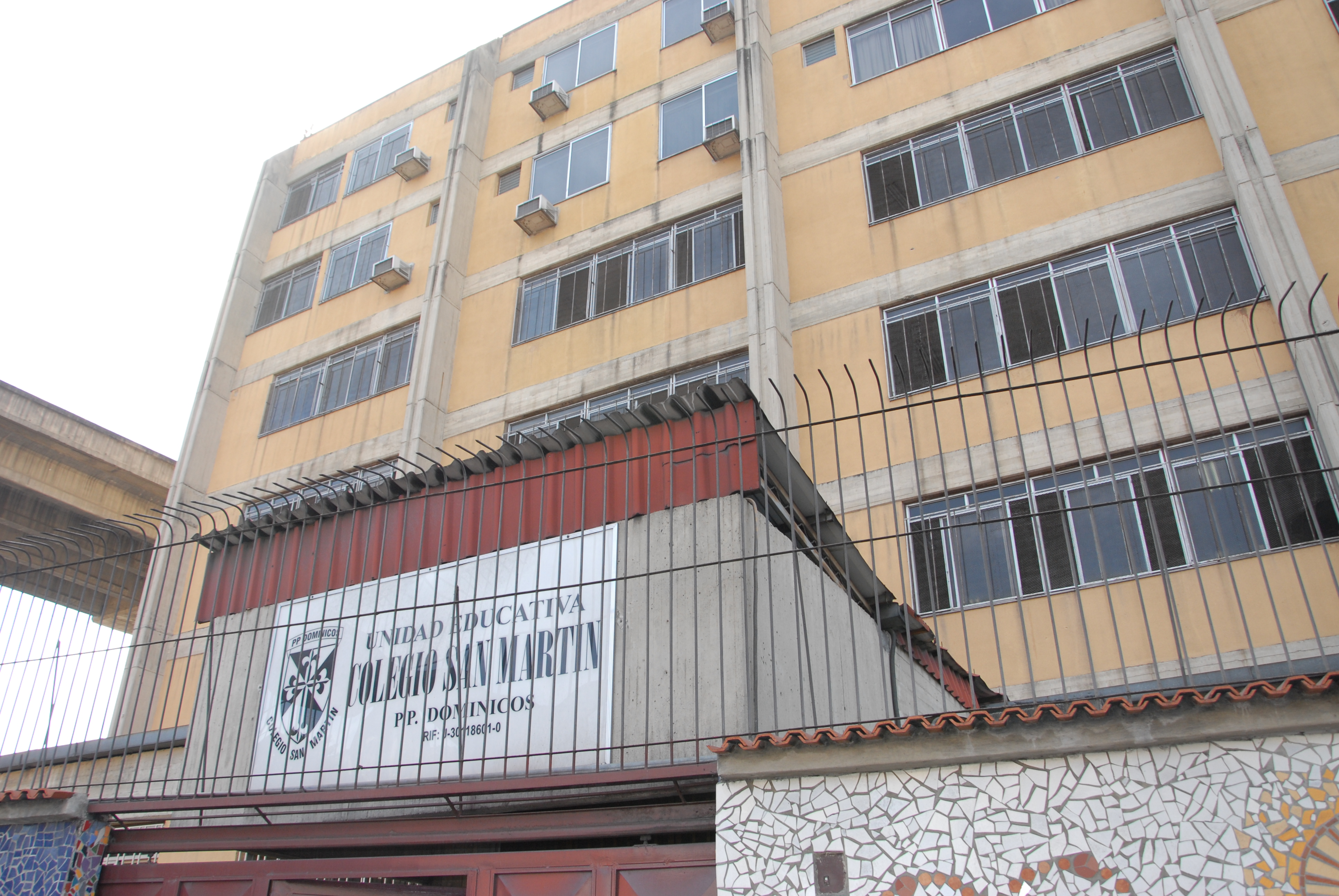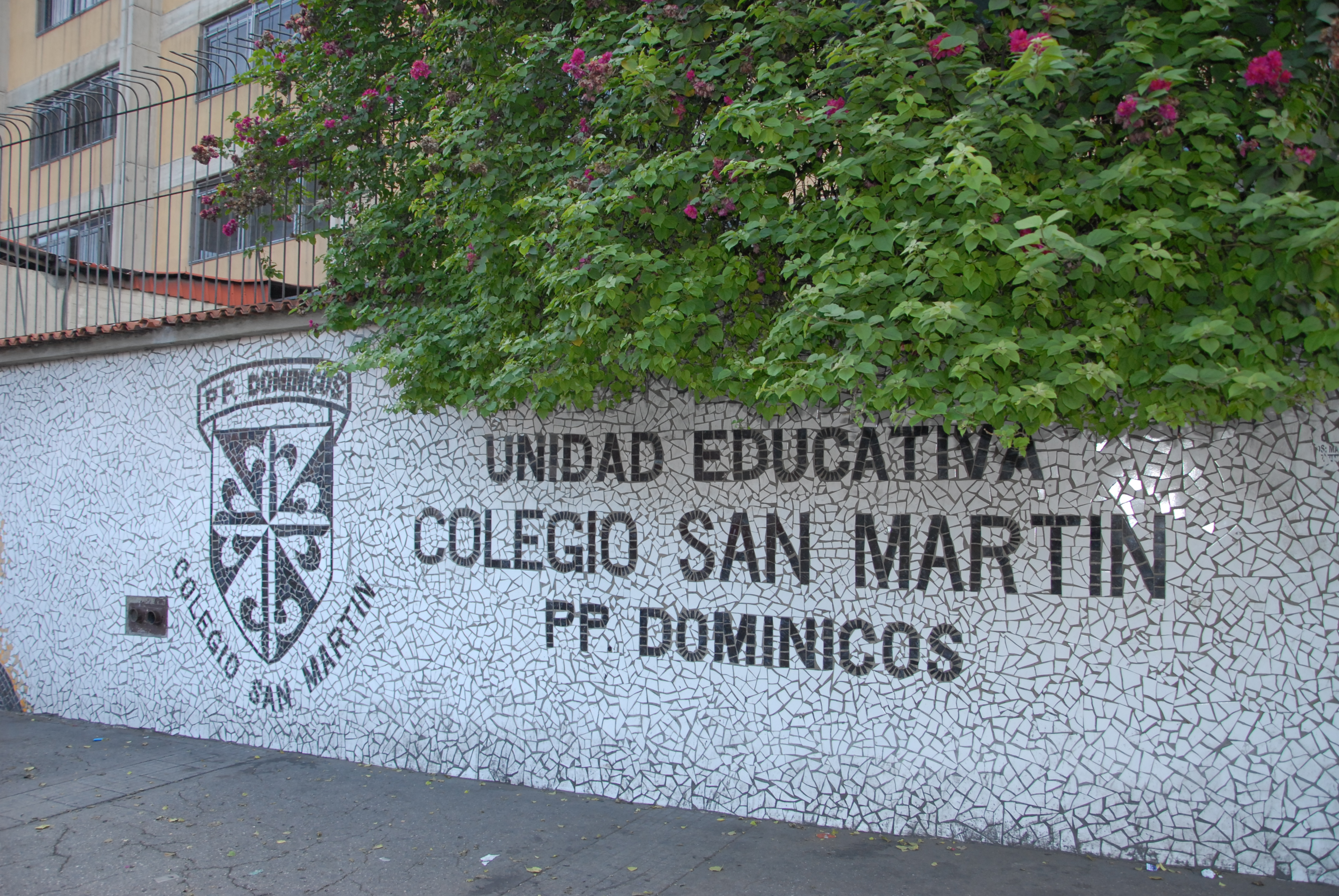HISTORY OF THE VICARIATE
The Land and its name
Venezuela is located north of Latin America and south of Central America. It is the nation closest to Spain and the United States. It has an area of almost one million square kilometers and has a population of 30,620,410 inhabitants. It enriched with a coastline of more than four thousand kilometers in the Caribbean to the Atlantic and flanked by the Andes mountains. Its great river is "Orinoco", tremendous and legendary.
Venezuela has two weather seasons: Winter is the rainy season and floods in the low areas, from June to December. Summer is a time of drought, it goes from January to May. The duration of day-night hardly varies, nor the cold-heat. In the high zones, it oscillates between 17-25 degrees; in the low, between 25-35 degrees, be it winter or summer.
As it is situated on a telluric zone, the construction in the country is anti-seismic; though present generations have not known destructive earthquakes. There are no hurricanes, no active volcanoes, no monsoons. It was Christopher Columbus discovered these lands during his third trip, in 1498, and he called it "land of grace". The Spaniard Alonso Ojeda knew about the stilt houses doting the Maracaibo Lake and by association of similarities with the Italian city, gave the name of "Venezuela" or “little Venice”.
The population of Venezuela is the result of mixed marriage among various races and inhabitants: The native Indians, the Spaniards who arrived during three centuries of colonization and with the negroes brought from Africa, because they were more resilient to heavy work.
The discovery of oil in the early part of the XX century attracted countless immigrants from Europe and neighboring countries. Only an insignificant population of the indigenous peoples remain—not reaching half a million and are found in the peripheries of the national territory.
In Venezuela, Spanish is spoken and Christianity is lived; during the last decades, other confessions or Evangelical sects had multiplied.
The Dominicans
The Dominicans began the evangelization of newly discovered Venezuela. They arrived with the conquerors, but with a different mission. They wanted to do ideal evangelization here: apostolic, free, without support from the soldier. The cross without the sword. They made this attempt in the Eastern coast of the country, in the region called Cumaná; various incidents and betrayals led to the failure of the project and the Friars were killed. They were the first Christian martyrs of the country.
During the colonial era, the influence of the Dominican Order in Venezuela was remarkable. They put themselves in favor of the Indians, in their defense against the “encomenderos” and the abusers. The teachings of the Dominican theologians of Salamanca on the principles of Human Rights was practiced here. They worked mainly in Coro, in Mérida and in the plains of Barinas and Apure. The list of Dominican Bishops who worked here is long; almost all of them Spaniards.
The struggle for independence from the Spanish Crown ended the Dominican presence in the XIX century. At the beginning of the XX century, the Friars of the Province of Our Lady of the Rosary came to begin mission in Venezuela, as the loss of the Philippines during the revolution of 1898 threatened the presence of the Order in the islands. Soon the friars of the Province of Betica continued the Dominican presence and the friars of the Holy Rosary returned to the Far East.
Our Time
In mid- XX century, when the communist revolution in China and Viet nam began to displace the Dominican missionaries of the Province of Our Lady of the Rosary, The Master of the Order, Rev. Fr. Manuel Suarez invited the displaced friars to come and collaborate in the evangelization of the plains of Apure and many came to Venezuela. Later generations of young friars came and the thriving mission was eventually consolidated. In time, the friars began to make a significant presence in the western part of the country and the Province of Betica was installed in the eastern part.
The hardest, most difficult and yet the meritorious mission was in the plains of Apure. The friars also settled in the Andean regions of Tachira and Trujillo. Later, as number of missionaries increased, new ministries were opened in Barinas, Maracaibo, Caracas and Barquisimeto. In the capitals of these States, many of their peoples have benefited from the immense work of the friars. It has been a half century of enormous work.
It should be remembered that the years after the struggle for independence, the Venezuelan church was greatly weakened due to the anti-clerical policies of the country. The newly established Republic was anti-clerical and soon they began to close Seminaries, expelled foreign missionaries and suppressed religious orders. They also exiled the bishops and Churchmen. The Church was greatly impoverished.
The friars of the Province worked largely during these years by substituting the lack of personnel. Many became parochialized, they opened missions for each friar, and common life was far from possible. This option had a price, though at that time, it was discerned as a response to the sign of the times, but the inevitable result was the abandonment of religious life and the priesthood among the friars. Proof of this was in the fact that of the 154 friars who have worked in Venezuela for a span of 50 years, 25 of them left the Order.
During this period, a total of 47 parishes were served by the Order; 83 Churches and chapels were constructed, and six schools established:
College “Francisco de Vitoria”, in Trujillo (closed)
College “San Juan de Letrán”, in San Fernando (closed)
College “María Inmaculada”, in Rubio
College “Cristo Rey”, in San Cristóbal
College “Archbishop Méndez”, in Barinas
College “San Martín”, in Caracas,
Fair enough, history had not forgotten the names of the major towns and cities where the friars of the Holy Rosary Province have worked; though many of them had been given back to the Diocese due to lack of personnel.
State of Táchira: San Cristóbal, Rubio, La Florida, San Simón, Hernández.
State of Trujillo: Trujillo capital, La Mesa de Esnujaque, Boconó, Cuicas.
State of Merida: Merida capital
State of Zulia: In the Diocese of Maracaibo: capital Maracaibo, Ensenada, Bobures, Caja Seca, El Batey; In the Diocese of Cabimas: The Ports of Altagracia, Sabaneta, Palmarejo, Santa Rita. In both dioceses many farm settlements (Caseríos) and adjoining districts were attended.
Caracas: varied presence of the friars in the College San Martín and in the parishes in the urban center and in the parishes of the peripheries.
State Lara: Barquisimeto capital
State of Apure: It was the most challenge mission due to the harsh climate, lack of communication, and the general religious indifference of the inhabitants.
We remember San Fernando, El Amparo, Guasdalito, Elorza, Palmarito, Bruzual, Antecal, Apurito, El Saman, Achaguas, San Juan de Payara, San Rafael de Atamaica, Cunaviche, Puerto Paez, with countless Farm settlements (Caserios) and Hatos scattered throughout the State of Apure, from which our great novelist Rómulo Gallegos one wrote:"El Apure, “an open and extended land, good for showing effort, and for winning achievements. Its horizons are like hope and its paths, life the will”.
“Unredeemed land, where a good race of people loves, suffers and awaits.”
---Doña Bárbara
The friars of the Province of Our Lady of the Rosary came to San Cristóbal in 1951. Twenty-five years prior, the Colombian Dominicans had built a residence with a chapel and a school. The initial construction was destined to the service of the College “Cristo Rey” which continues to provide Pre-school, Elementary and Secondary education, with an enrollment of 460 students, and is well known throughout the city for its academic excellence.
Since their arrival in San Cristóbal, the friars have given priority to the work of evangelization through preaching and catechesis, combining the pastoral ministry with teaching and a strong presence in the media.
Today the conventual complex consists of the College, the Church and the convent.
The convent was constructed in 1968 and the school and Church is dedicated to Saint Dominic which is better known among the Caraceños as the Church of the Angel. The Church began to function as a parish since 1966.
The Church of Saint Dominic was built between 1955 and 1956. Viewed from the outside, it reaches 70 meters long. It has a single nave with no columns in the center. The temple has capacity for a thousand seated people. Behind the presbytery, on a concave wall there is a large mural by the artist Juan Ferrer. The columns that support the roof are built on the sides and thus cannot be seen exteriorly. A ceiling consists of three levels, and are decorated with the various symbols of the Order.
The most outstanding part of the Church is the tower measuring 60 meters high. In front of it is a huge angel in posture of prayer representing the keel of the Church built in the shape of a ship: The Church of Christ is a boat of salvation.


